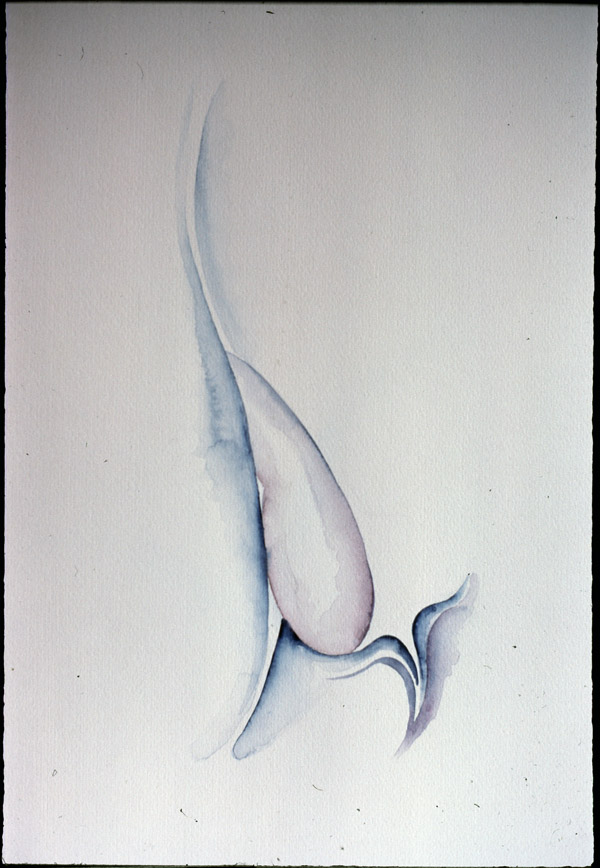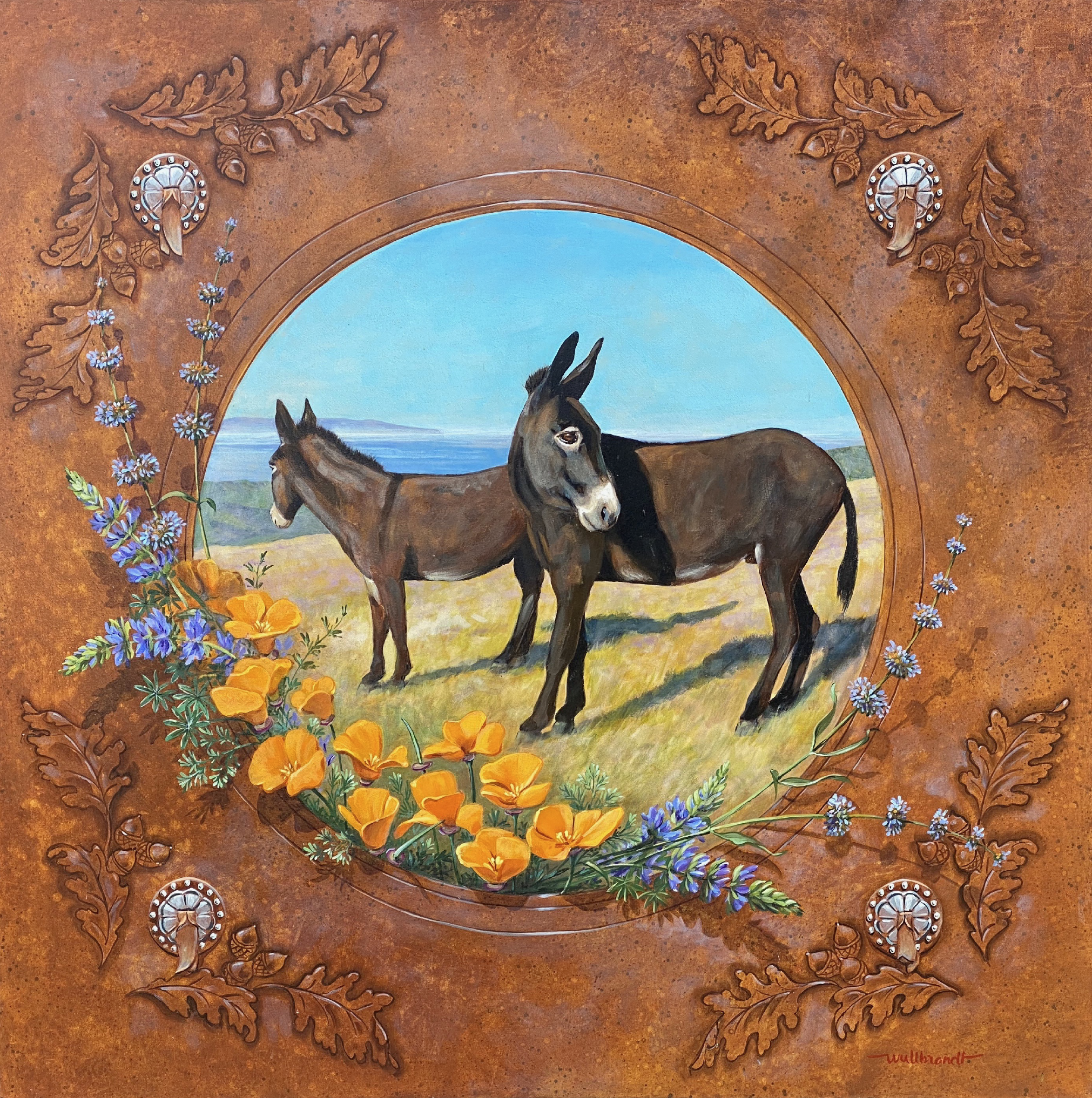Map of the Sleeping Stones: Studio Visit with Mary Heebner
By Noelle Barr, UCSB/Lum Arts Writing Intern
"Travel is the best way to get out there and make mistakes; it increases your sense of what it is to be human and you realize we all want the same things — to connect and create."
Local and professional artist Mary Heebner's "interest in the numinous qualities of the physical world and their expression in cultural and natural forms" perpetuates a cathartic fluency in humanitarian ephemerality. Following Mary's visit with the Art, Design & Architecture Museum interns, I reached out to her searching for work opportunities, yet found myself engaged in a profound conversation.
Mary Heebner received her B.A. from the University of California, Santa Barbara College of Creative Studies in 1973, and her M.F.A. in 1977 from UCSB under the mentorship of William Dole. She has exhibited her work internationally in solo and group shows, produced and written books, received awards and grants for her contributions in public art projects, and traveled around the globe with her partner, Macduff Everton, another UCSB alum in photography.
“Bacchus,” from Veiled/Unveiled series, 2018.
03.17.19, 11 a.m., Santa Barbara, California
Noelle Barr: Where did this begin for you, art?
Mary Heebner: Highchair — I was drawing since I was little. Sometimes they say out of your handicap comes your art, and for me, I think that's true. When I was two, my eye crossed in... I would draw and it would flow offside. Then I would turn it around so it would be straight. I had two surgeries to correct my crossed eye and had to wear a patch on my good eye to strengthen the weak one.
So, this handicap conjured your interest with abstracting human form?
What's fascinating for me about working with faces is that we are hardwired to see a face, and with my recent series, Veiled/Unveiled, I deconstruct it, yet the human face still has a presence.
Do you usually focus on men or women when depicting these forms?
It seems that I'm really focused on women and bodies. My Venus series is about human form based on ancient sculptures — clearly, the sense of embodiment. Also, I'm female so I know that best. I try to give boys equal voice, but so far girls are winning.
Venus IV, "Into desire I shall come," handmade paper collage 78" x 39".
How have human interactions influenced your artistic development?
I was shy around people and I would draw people when they wouldn't notice. Drawing is a way of honing your chops and it helps you be able to see. To draw is to make real.
Once you established yourself as an artist, what anxieties did you face and how did you cope with them?
I was trying to figure out what I was going to do. I worked at several ordinary jobs, like waitressing, but I always painted and drew, so I knew intuitively I was an artist. It was the way I could connect to the world, and it was a way I could isolate myself from the world — pulling away from whatever was the daily chatter. It was a real place of solace for me. My mom would always take me to art lessons, but she was worried, “have a career, have art as an avocation,” and I just kept doing my art.
How have your experiences, both internal and external, shaped your relationship with material art?
When I was in high school, I started a little literary magazine with my friends called Concept. I was in high school when the Vietnam war was going on. My best friend's brother came home and shot himself in the head from PTSD; there were murders, Martin Luther King, JFK — it was a really violent time, but also a really exciting time. People were trying to find out new ways of being and the underside of humanity was showing as well.
Cassandra, Art book, poem by Stephen Kessler and art by Mary Heebner, 2018.
How might you claim political activism in your own work?
Any act of drawing or painting is a political act in some way or another, and it says, “this is what I see, and this is who I am.” Sometimes it has to be more overt like a protest sign, but other times it's subtle. I think that “Cassandra” is an example: a myth about a woman who tells the truth, and no one believes her. That is a political statement, but it's also a thing of beauty. I am not overtly political, but it speaks to humanity and what I think matters.
Would you say that's how you reconcile what you experience emotionally and politically within the world?
Reconcile, sometimes it's reconciled. I think doubt is a really important thing for an artist to cultivate instead of being certain. I don't want to be certain like that. I want to understand that doubt is a really important emotion. So is fear, and so is passion. All these things are things that make you human and how you connect to other humans, animals and the earth.
How do you connect with color and its sensation?
Color is wonderful. I came to respecting color more when I was an undergraduate. I was pregnant and living I was pregnant and living in a small downtown studio with my (former) husband. I was painting in oils at the College of Creative Studies, and he said, “These look like art to me. Where are you in it? What does this say about you?” He was absolutely right; I was making things that would be expected of somebody making art. I put away all the colors. The smell of oil made me sick, so I got out the watercolors and I used burnt sienna and Payne's grey. I just worked with those two colors — a warm and a cool. I was doing things that had to do with birth, or how it felt to me to be pregnant. I was really inspired by Georgia O'Keeffe, little buds that gradually built up by adding other colors. Then I went into graduate school and worked with Bill Dole. I always worked with water-based medium from then on.
"Studies for Birth,” 1973.
Clearly the elements of your art echo your individuality, yes?
All art is autobiographical. It tells me where I am. You can't get away from yourself, and it takes a long time to find your voice. There are so many mistakes that become your stepping stones.
Your father was a musician. How have other forms of art influenced you, like music and dance?
I love to dance. I grew up and played the flute, he played clarinet and sax. So, I was around music all my life. The best compliment I ever received was when my dad would see what I was doing in the studio, and he'd look and go, “well, baby, I don't know much about art, but you got rhythm.”
I'm very interested in you and Macduff Everton as artists, your relationship and working together. Could you tell me about that?
When Macduff and I got together, I had been single-parenting for several years, and I was just fine. I had my studio and my daughter Sienna; I didn't need anything else. I'd known of him, but we didn't really know one another, and one night I was in my studio, called him and invited myself to Mexico. So, we went to Mexico and fell in love. It was over 30 years ago.
What is Macduff’s artistic background?
He's a really brilliant photographer. He's self-taught, and he took off when he was seventeen to go surfing in France. He wound up traveling by his wits and a few dollars around the world.
How did your work as artists engage with your personal relationship?
We learned to give each other a wide berth. He's going to do something whether I say so or not. And I'm going to go off and do my thing, and he's going to support it. There has to be generosity and a trust, something that reminds you during tough times that you are both on the same side.
Intimacy: ROME series.
These stories about uncertainty are compelling and seem so fulfilling.
There's a thing we often say as artists — “We don't have much security, but we have a lot of freedom.” I don't regret that at all; especially, when I was single-parenting for eight years. I didn't have any support, so I was selling my artwork in galleries and making it work. Something always came through.
Can you tell me more about your experience in college and becoming an artist?
I don't think you want to follow my footsteps. I came in the winter quarter of 1969, right when the oil spill had just happened and the riots in L.A. I got into the College of Creative Studies at the beginning of my sophomore year. The summer between I was in Spain teaching. When I came back, Sienna's father joined the Peace Corps in Tunisia. So, I went to meet up with him. Then we came home and decided we wanted to live together, get married and save money. We lived in a car in Isla Vista. I would shower at the dorms, worked two jobs, and took 22 units at CCS. It was an interesting time, I learned self-discipline. I'd go in CCS early in the morning before anybody got there. I had a wonderful time at CCS because they had an influx of people come in. Writers, critics, artists, poets, musicians and the New York City Ballet would come to rehearse in Lotte Lehmann Hall. And then my senior year I was pregnant and working at Sun and Earth Sun & Earth Natural Foods and Jacques Italian restaurant. I had a studio in a part of a room in an IV apartment, and then I applied to graduate school.
Do you have any advice for current artists at UCSB?
Look at art, first of all. If you see a reproduction of something you haven't seen the art; you have to see the art and experience it. Go to museums and read literature.
“Map of the Sleeping Stones,” collage made with watercolor, acrylic, powdered pigment, graphite and photo-print on handmade Sekishu paper.
Cover photo by Macduff Everton.
A selection of works by Mary Heebner will be on view in the exhibit The Muse Project: Mary Heebner and Jeff Shelton at the Art, Design & Architecture Museum, UCSB, from July 13, 2019 to September 1, 2019. There will be an opening reception on July 26, 2019 from 5:30 to 7:30 p.m.










